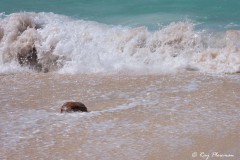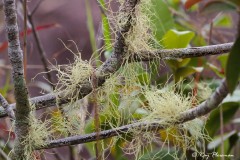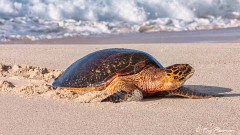Seychelles Mahé Flora and Fauna Galleries
Seychelles Mahé Flora and Fauna feature galleries and photos of plants, fungi, invertebrate such as spiders, and vertebrate animals such as reptiles and birds.
Flora on Mahé
The first gallery displays native (endemic and indigenous) species, while the second feature invasive and introduced plant species.
Native (Endemic and Indigenous) Plants on Mahé
[foogallery id=”13859″]
Endemic Plants
Seychelles Pitcher Plants: These threatened species have modified leaves called pitfall traps with deep cavities filled with digestive fluid. Furthermore, when insects fall into the pitcher, the trap shuts, and prey gets digested. In this way, the plant receives the nutrients it cannot obtain from poor soils at Glacis Trois Frères.
There are six endemic palms on Mahé, and three features including Latanier Millepattes, Thief Palm, and vulnerable Millionaires Salad Palm. Specifically, the mature tree of the latter has spathes that develop at right angles to the palm trunk just below the leaves’ crown. Then these spathes eventually split to reveal flower branches.
The Coco De Mer Palm is an endangered Seychelles endemic indigenous to the Mai Valley on Praslin. Although, I photographed the displayed image at the Botanical Gardens on Mahé.
Indigenous Plants
Beach Morning Glory is a native plant that covers some sandy banks on Mahé Islands beaches.

The origin of both the ubiquitous Coconut Palm and the Casuarina trees that fringe some of Mahé beaches and coastal forests is unclear. Both species have replaced much of the original natural vegetation. Moreover, in the eighteen-hundreds plantations grew introduced coconuts. But they also occurred naturally on the beaches, and Coconut seeds have evolved to spread by water. Therefore, coconuts could be indigenous and naturalised.
In contrast, casuarina trees could be indigenous (Ref 1) or most likely an invasive introduction dating from 1768 (Ref 2 and Ref 3).
Invasive and Introduced Plants on Mahé
[foogallery id=”13899″]
Invasive Plants
Wild Pineapple and Cocoplum are two introduced invasive species (Ref 2 and Ref 3) I found at Glacis La Reserve. And several cocoplums along the Anse Major trail.
Introduced Plants
Ochna kirkii is a distinctive woody shrub that has a beautiful flowering and fruiting method. It produces yellow flowers which, after pollination, the sepals wither, and calyx closes. Then within the calyx, up to six berry drupelets develop on the swollen red receptacle. The green berries then grow on the receptacle and ripen to a glossy black colour. Finally, eaten by some bird species, thereby distributing the seeds.
Busy Lizzie, a cultivar in Seychelles, may have become naturalised. While walking the Anse Major trail, I photographed a couple of plants on the granite slopes.
The last three photos introduced species: Malay Apple, Breadfruit, and Cannonball Tree.
Fungi on Mahé

Beard Lichen at Glacis La Reserve
Bearded lichen grows on small leafless shrubs with algae. The lichen and algae have a symbiotic relationship. The algae photosynthesise food for the lichen, and the lichen stops the algae from drying out.
Fauna on Mahé
The fauna galleries feature Invertebrate and vertebrate animals, arranged into four photo galleries, grouped by their high-level classification see note below.
Invertebrates
A single invertebrate gallery displays images of a Snail, Spider, Crabs, and Stalked Barnacles.
Snail, Spider, Crabs and Barnacles on Mahé
[foogallery id=”14037″]
Snail
The Giant African Land Snail (Achatina sp.) I have identified it as species fulica, but it could be Immaculata.
Spider
A female Palm Spider, part of the golden orb family, often seen amongst electrical power cables and palm trees. Both species include images showing dorsal and ventral views.
Crabs and Barnacles
Giant Mangrove Crabs inhabit freshwater swampy stream and estuaries. I photographed them at or near their burrows in Aux Pins Mangrove swamp.
In contrast, I photographed two crab species and goose barnacles on Anse Bazarca beach. Specifically, a Swift-footed Crab on the rocks near the sea, a juvenile Horned Ghost Crab on the sand near its burrow, and Goose Barnacle on debris washed up on the sand.
Vertebrates
The first vertebrate gallery features reptiles and mammals, while the second and third display birds and their behaviours.
Reptiles and Mammals on Mahé
[foogallery id=”14063″]
Reptiles
Hawksbill Turtles
Featured reptiles include the endemic Seychelles Skink and the Common House Gecko. In addition, a separate webpage features a gallery that provides photo essays and galleries of the critically endangered Hawksbill Turtle.
Mammals
Endemic Seychelles fruit bats photographed at Mont Fleuri Botanical Gardens; it is the only endemic mammal on Mahé. Sheath-tailed bats on Silhouette Island is the only other endemic mammal in Seychelles. However, Seychelles has four or five introduced mammals. These include common tenrec and three pests, the Norway (Brown) Rat, Ship (Black) Rat, and a House Mouse.
Birds on Mahé
[foogallery id=”14086″]
Native and Seabirds
On the central Seychelles islands, only 38 bird species breeds, including nine introduced. Nineteen native landbirds; the rest are seabirds (Ref 4). The gallery displays a collection of Seychelles bird portraits from my bird web pages.
Native Birds: Grey Heron.
Endemics Birds: Seychelles Bulbul and Striated Heron subspecies (degens).
Introduced Landbirds: Madagascar Turtle Dove, Red Fody and Zebra Dove (Barred Ground Dove).
Seabirds: White-tailed Tropicbird and Roseate Tern.
Migrant Birds
At least 16 species of wader (shorebirds) are annual visitors to central Seychelles islands, but none breed (Ref 4). Featured birds photographed on Anse Bazarca are Grey Plover, Crab-plover, Whimbrel, Terek Sandpiper, Ruddy Turnstone and Sanderling. Except for the crab plover, which breeds in the Red Sea and the Persian Gulf, the other waders breed in the far north of Europe and Siberia. They migrate south to the East African Coast and Seychelles to avoid the harsh northern winter months arriving as early as October and leaving as late as May. I also photographed a common or roseate tern fishing close to the beach.
Migrant Shorebirds: Sanderling, Whimbrel, Ruddy Turnstone, Crab-plover, Terek Sandpiper, and Grey Plover.
Bird Behaviour on Mahé
[foogallery id=”14099″]
Bird Behaviours
Striated Heron fishing, Roseate Tern also fishing and Crab Plover, an adult and immature resting on the shoreline at Anse Bazarca.
Natural Scenes on Mahé
Creative and close-up photographed on some of Mahé beaches.
[foogallery id=”14480″]
Animal Classification and Photo Galleries
The figure shows a classification diagram in time-ordered evolutionary history to illustrate the arrangement of fauna in the photo galleries:
Invertebrates contain a single gallery with:
(1) Gastropoda (Snails) placed in Mollusca (Molluscs),
(2) and Arachnida (Spiders) and Malacostraca (Crabs and Stalked Barnacles), which belong to Arthropoda (Arthropods).
Vertebrates comprise two galleries:
(1) Reptilia (Reptiles) and Mammalia (Mammals),
(2) And Aves (Birds) with portrait and behaviour galleries, both placed in Chordata (Vertebrata).
[foogallery id=”17373″]
Mahé Flora and Fauna References: Online Resources
1. Seychelles Plant Gallery. [Online] Available from http://www.seychellesplantgallery.com/
galley.html (Thematic inages gallery) [Online] Accessed 14th April 2021].
2. C. Kueffer1 and P. Vos. (May 2004). Case Studies on the Status of Invasive Woody Plant Species in the Western Indian Ocean – 5. Seychelles. [Online] Available from https://www.researchgate.net/ publication/237362623 [Accessed 14th April 2021].
3. National Strategy for Plant Conservation (2005-2010). [Online] Available from https://www.cbd.int/
doc/submissions/plt-conserv-sc-en.pdf [Accessed 14th April 2021].
4. Nature Seychelles. [Online] Available from http://www.natureseychelles.org/ [Accessed 19th April 2021]. Native Birds, Endemic Bird Species, Introduced Land Birds, Migrant Shorebirds.
Mahé Flora and Fauna Bibliography: Online Resources
1. Seychelles Plant Conservation Action group. [Online] Available from http://www.pcaseychelles.org/ [Accessed 14th April 2021].
Bibliography: Printed Resources (Books)
1. Bowler, J. (2006). Wildlife of Seychelles. Old Basing, Hampshire: WILD Guides.
Indigenous Plants
Invasive Plants
Native and Seabirds
Migrant Birds
Top
